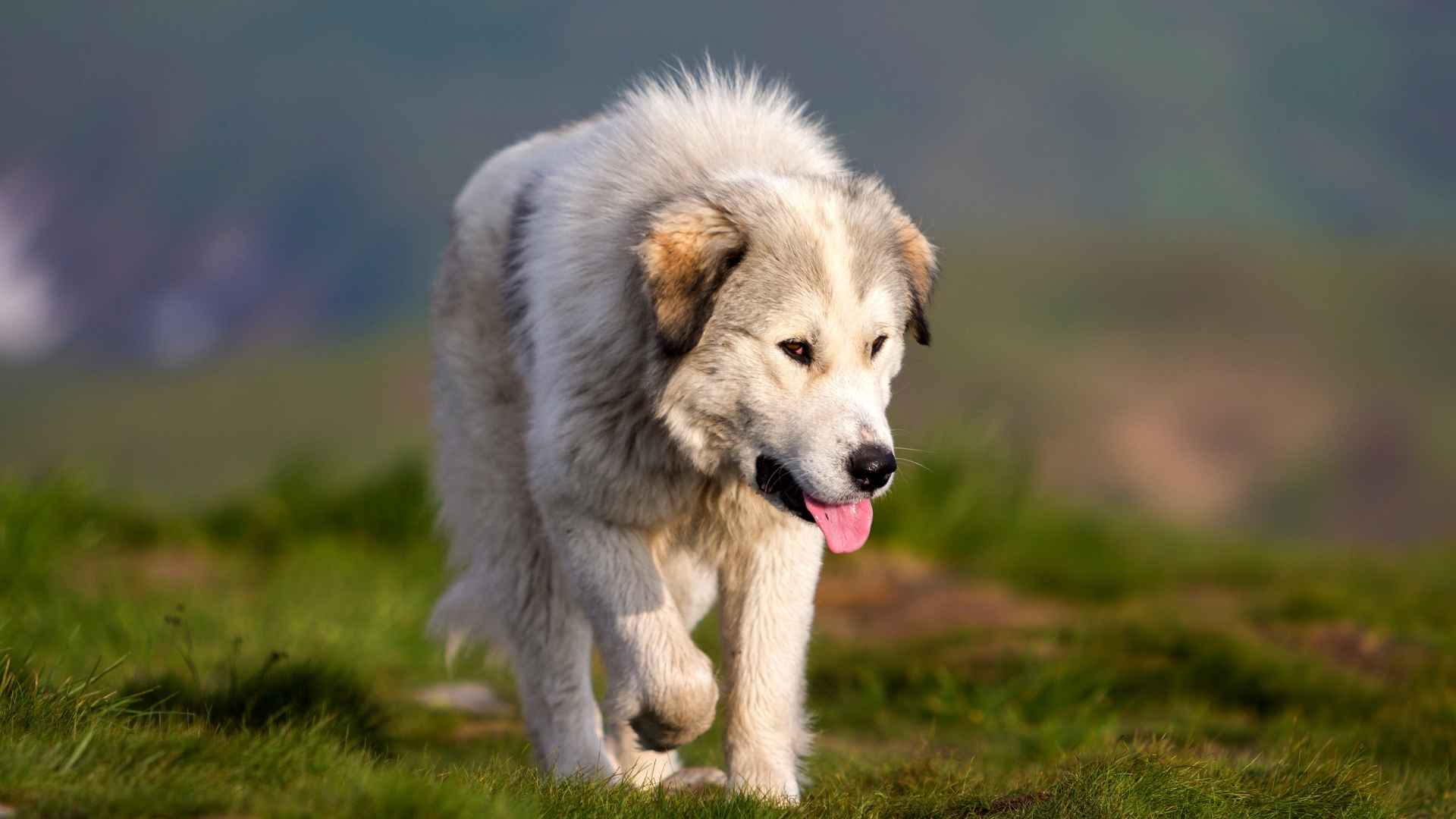Living alongside predators is a reality for many shepherds around the world. Bears, especially, pose a serious threat—not just to sheep and goats, but to the humans who tend them. What’s remarkable is how some dog breeds have been trusted for centuries to stand between shepherds and these massive intruders.
A recent field study monitored actual grizzly bears via GPS tracking and paired farms with and without specially trained guardian dogs. The result? Bears avoided those properties by a significant margin, even when attractants like spilled grain were present. That suggests these dogs reshape predator behavior around human settlements.
Even beyond bears, livestock guardian dogs create what ecologists call a “landscape of fear” for predators—foxes, coyotes, even wolves steer clear of flocks protected by these dogs, dramatically lowering predation rates.
Their mere presence can shift predator behavior entirely, making areas feel too risky for a bear to wander into. And for shepherds working in remote, rugged regions, that quiet protection means everything.
Dog Breeds That Protect Shepherds From Bears
Here are the 9 livestock guardian dog breeds:
1. Anatolian Shepherd
When it comes to facing off against serious predators like bears, shepherds don’t rely on luck—they rely on instinctive, battle-tested dogs. The Anatolian Shepherd Dog is one such powerhouse, bred over thousands of years for the sole purpose of defending livestock and people from danger.
And due to its sheer size and no-nonsense temperament, most predators—including bears—learn to keep their distance.
Key Traits
Ancient Bloodline: One of the oldest known domestic dog breeds, with documented use as far back as the Babylonian era.
Intelligent but Stubborn: According to WebMD, their sharp minds are matched by fierce independence. This isn’t a dog that blindly follows commands.
Strong, Silent Type: With one of the most powerful bite forces in the canine world, they don’t bark unless there’s real danger.
Unique Facts:
In Namibia, these dogs are used to protect livestock from cheetahs, reducing conflict and helping conservation efforts.
Their rugged instincts allow them to survive harsh climates and hunt small animals when necessary.
Despite their thick double coat, grooming needs are low—just weekly brushing unless it’s shedding season.
Not suited to small spaces—they need room to move, work, and observe.
2. Great Pyrenees
When a predator as bold as a bear roams nearby, few sights are more reassuring than a massive white figure calmly standing guard. The Great Pyrenees is exactly that presence—a watchful, unwavering protector trusted by shepherds for generations.
Originating from the Pyrenees Mountains, this breed was originally bred to patrol steep terrain, fend off threats, and quietly stand between danger and the flock.
Key Traits
Double Dewclaws: According to PetMD, their signature feature—two extra claws on each back leg—helps them grip icy slopes with ease.
Royal Dog: Once a symbol of nobility, this royal dog was used to guard European castles as well as livestock.
Nocturnal Watchdogs: Their instinct to stay alert through the night makes them ideal for keeping threats at bay when visibility is low.
Unique Facts:
Their enormous white coat repels dirt and water and requires surprisingly little grooming.
Large paws work like natural snowshoes, ideal for harsh, cold climates and rough terrain.
Deep-chested with excellent lung capacity, they’re well-adapted to high altitudes and mountain life.
Known as gentle giants, they’re deeply affectionate with children and bond strongly with their families.
3. Tibetan Mastiff
In remote, high-altitude regions where shepherds must defend against bears, wolves, and even leopards, strength alone isn’t enough—you need presence. The Tibetan Mastiff delivers both.
Known for its massive build, dense coat, and bold instincts, this dog has guarded farms, flocks, and monasteries for centuries. While more commonly recognized today as a family protector, it has a history as a territorial and fearless guardian that still defines its behavior.
Key Traits
Fiercely Protective: Deeply loyal and territorial, they naturally guard livestock, homes, and property with no hesitation.
Independent Mind: Highly intelligent, yet notoriously stubborn, they require experienced and committed training from an early age.
Nocturnal Vigilance: These dogs become especially active at night—ideal for spotting and deterring predators after dark.
Unique Facts:
Known in Tibet as “do-khyi” or “tied dog,” they were traditionally unleashed only at night to defend the flock and the land.
Referred to as the “Heavenly Dog”, many locals believe they were born to battle beasts—including bears and wolves.
Unlike many breeds, they “blow” their coat once a year, shedding intensely over a short period.
Their surprisingly tidy habits have earned them comparisons to cats for their cleanliness.
Due to their independence and dominance, they’re not ideal for first-time owners.
4. Maremma Sheepdog
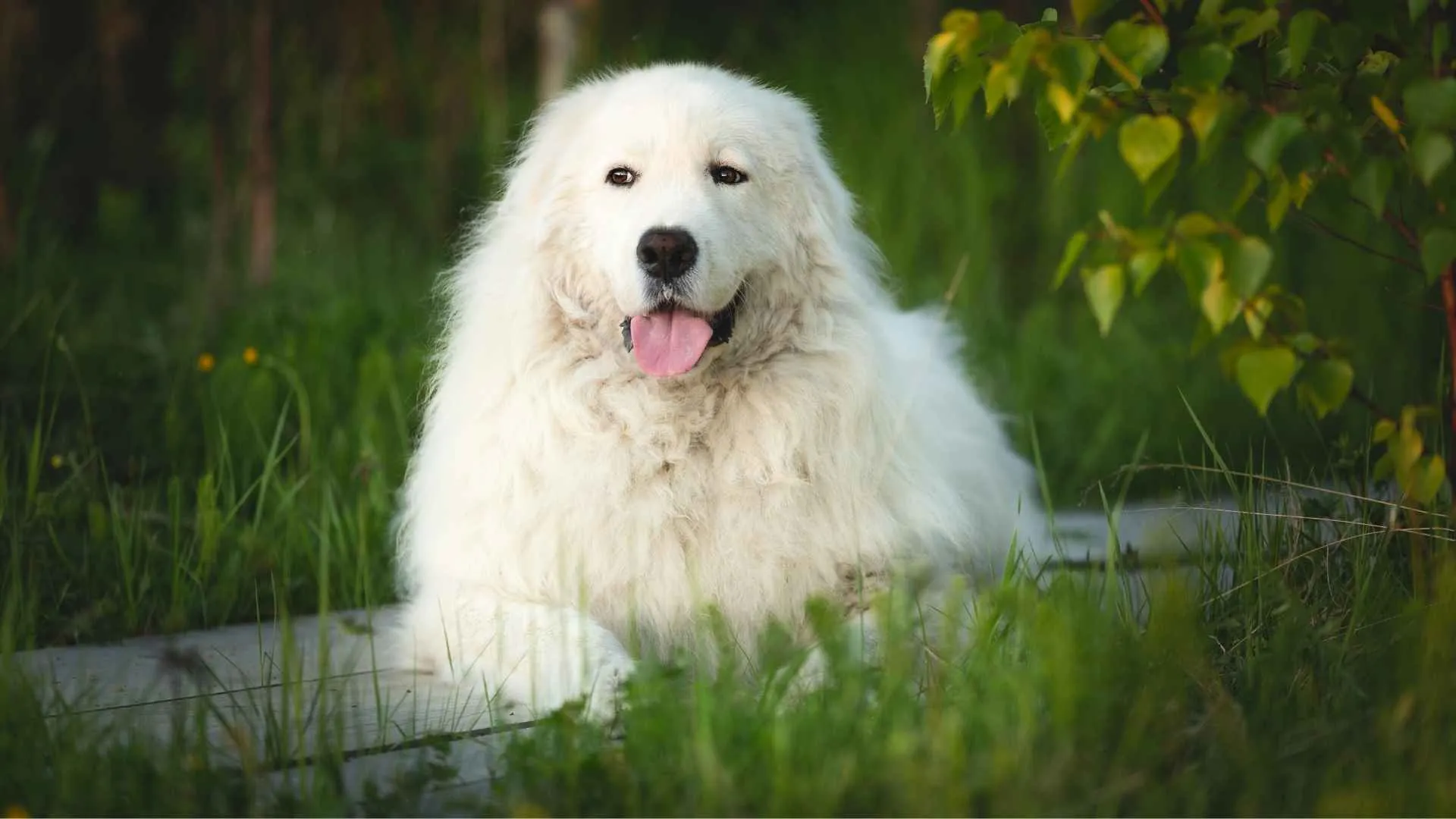
For shepherds who need a watchful presence that can quietly guard against bears and blend into a flock, the Maremma Sheepdog is a natural choice.
Originally developed in rural Italy, this observant livestock guardian breed is known for staying close to its herd and reading the landscape with surprising nuance. Whether it’s a shadow moving through the trees or the distant sound of movement, the Maremma reacts quickly, without panic, but with purpose.
Key Traits
Warning System: Their loud, deep bark acts as both a deterrent and an alarm, helping to alert both shepherd and strangers.
Coat That Works: Their thick, dirt-shedding coat keeps them clean and cool in summer, warm in winter.
Instinctively Protective: Calm with family and flock, but reserved around unfamiliar faces—early socialization is key to balance.
Unique Facts:
Gained worldwide fame after guarding a penguin colony in Australia—proof of their versatility and focus.
Referred to as the “secret sauce” in livestock defense for their mix of attentiveness and gentleness.
They thrive when given meaningful work and space to roam, making them classic working dogs.
Generally not aggressive, especially when raised with other animals and children.
5. Kuvasz
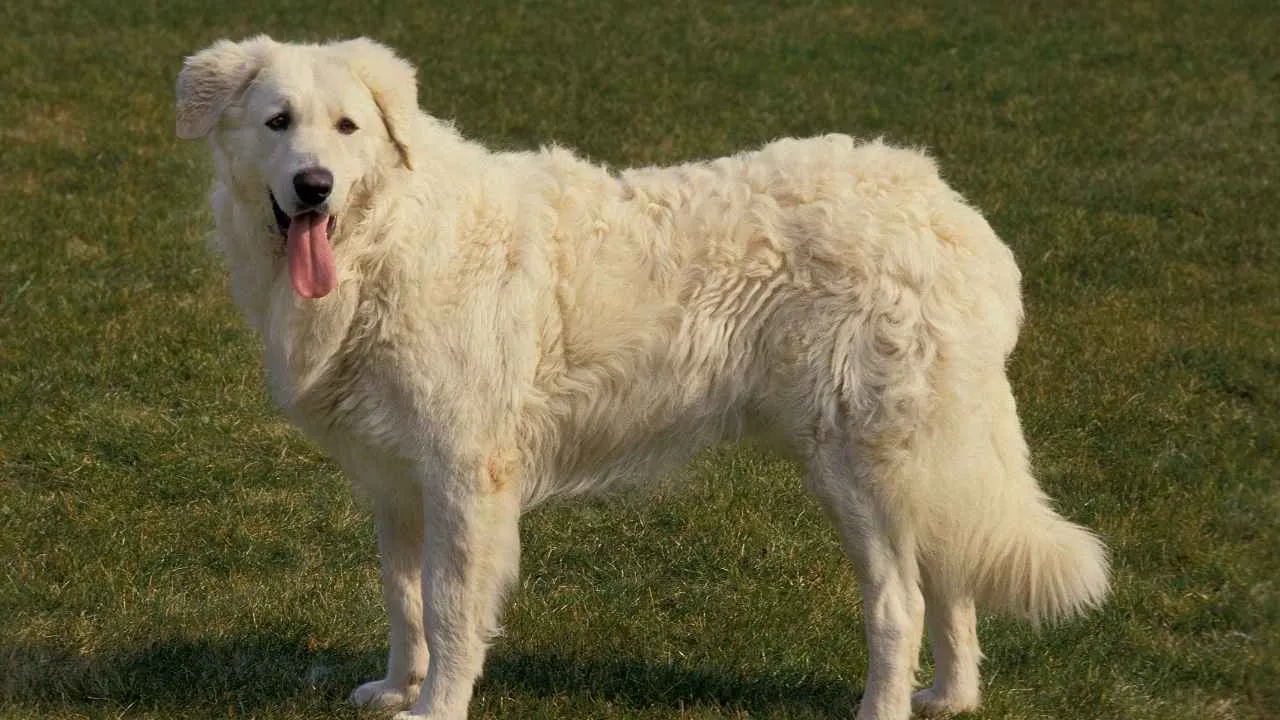
When a shepherd needed a dog that could handle itself against bears, wolves, or any large threat without backing down, the Kuvasz answered the call. Known for its nobility, confidence, and deeply protective nature, this ancient guard dog has a reputation that stretches back to the days of horseback warriors and open plains.
Originally from Hungary, the Kuvasz was valued not just for its strength, but for its judgment—the ability to decide, alone, whether a threat needed to be confronted or ignored.
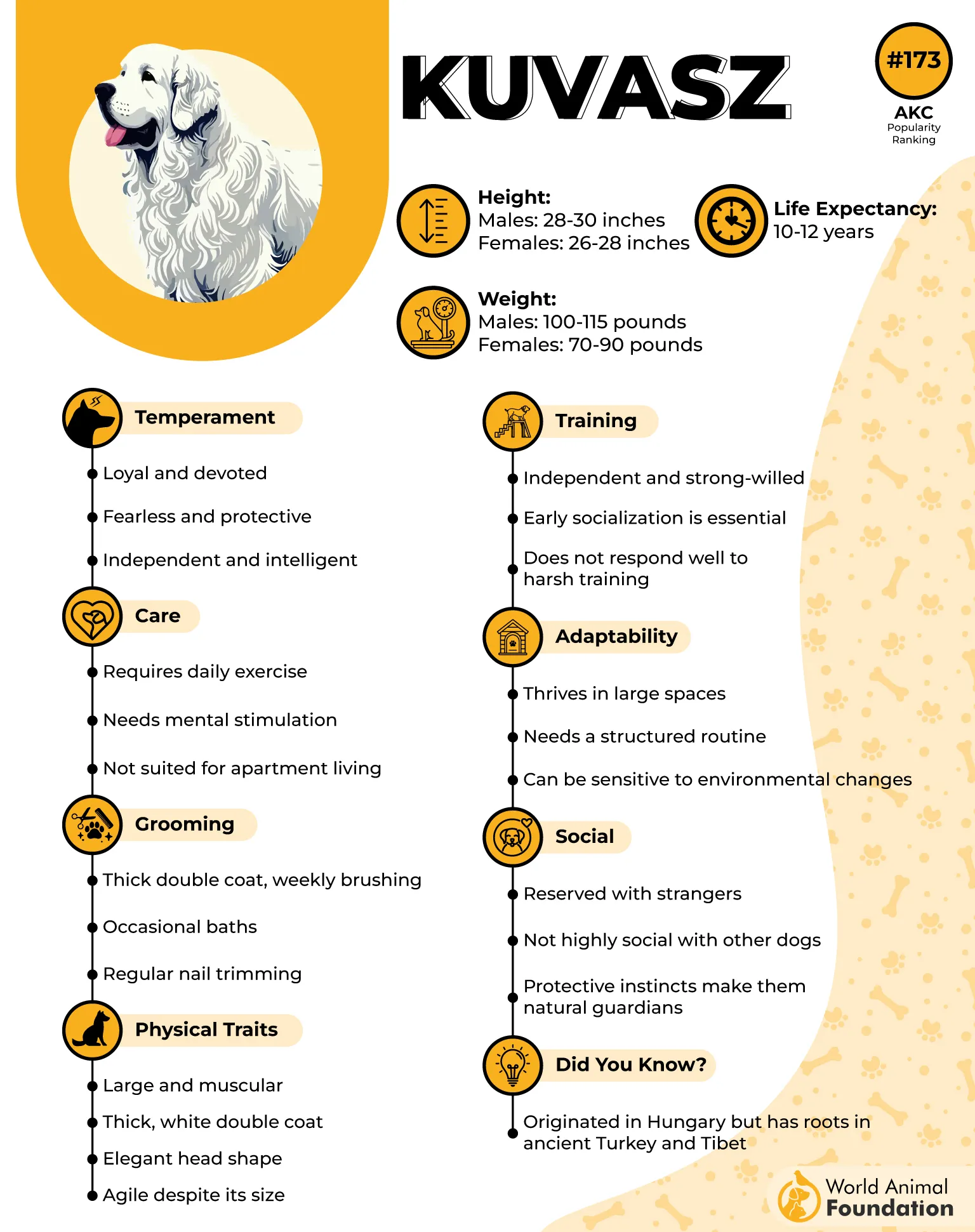
Key Traits
Weatherproof Coat: Their coarse, medium-length double coat—usually white—repels dirt and provides insulation in changing climates.
Strong-Willed and Smart: This powerful dog requires firm training early on to channel its natural guarding instincts.
Moderate Maintenance: Though they shed, weekly brushing helps manage it, and their coat stays relatively clean.
Unique Facts:
The name “Kuvasz” may come from a misspelling of the Turkish word kawasz, meaning “armed guard.”
Nearly disappeared after WWII—many were killed for their bravery defending homes and livestock.
Once called the “Dog of the Horse,” their job wasn’t just guarding livestock—they also protected cavalrymen and their steeds.
Surprisingly, they’re easy keepers, needing less food than most dogs their size.
6. Bernese Mountain Dog
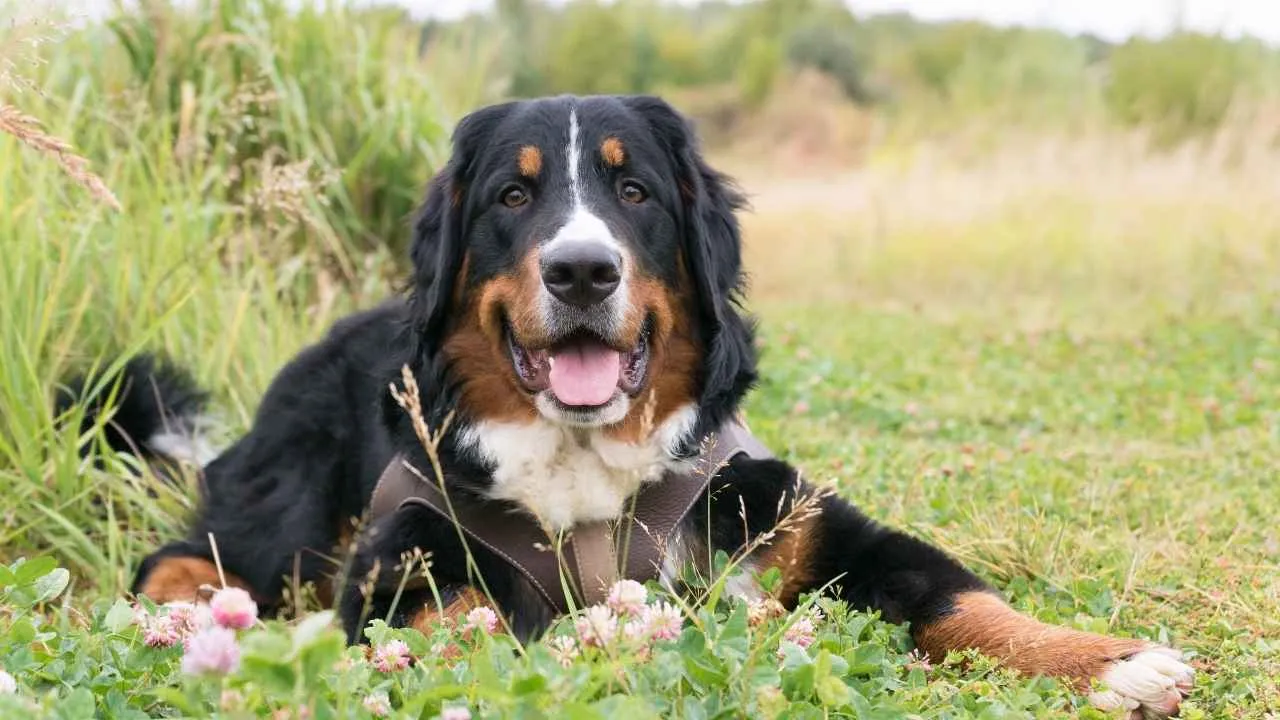
A trusted guardian of livestock in mountainous terrain, the Bernese Mountain Dog was originally bred in the Swiss Alps, where they played a key role not only in farm work but also in avalanche rescues.
Their ability to detect danger and respond quickly made them valuable companions for shepherds. Calm with their families but protective when necessary, this breed offers a powerful blend of loyalty and instinct, making them well-suited for defending flocks against wild predators.
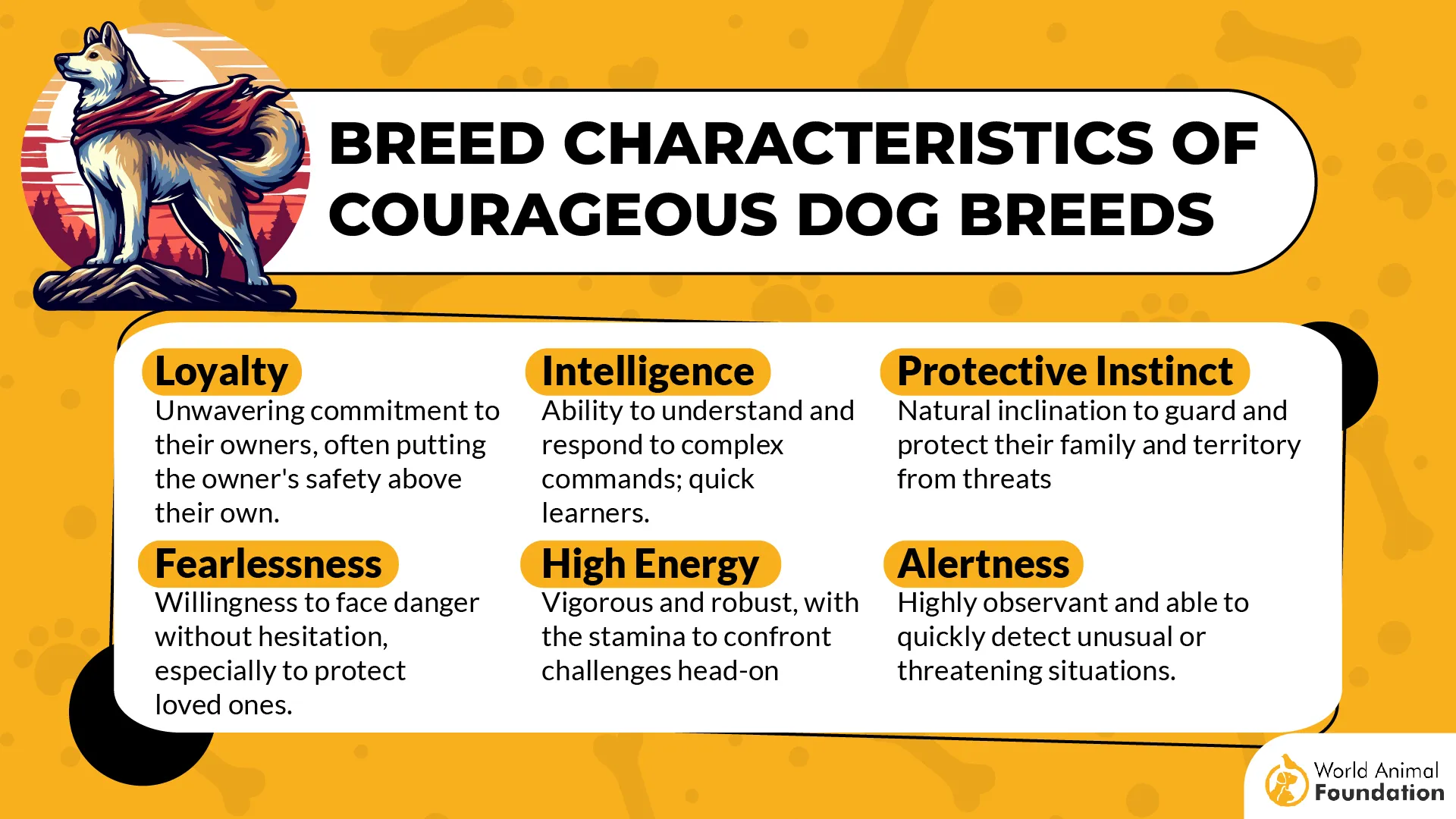
Key Traits
Tricolor Coat: According to the American Kennel Club (AKC), their iconic black, white, and rust coloring doesn’t just look stunning—it also helps them stand out in snowy terrain, which is crucial during rescue or protection work.
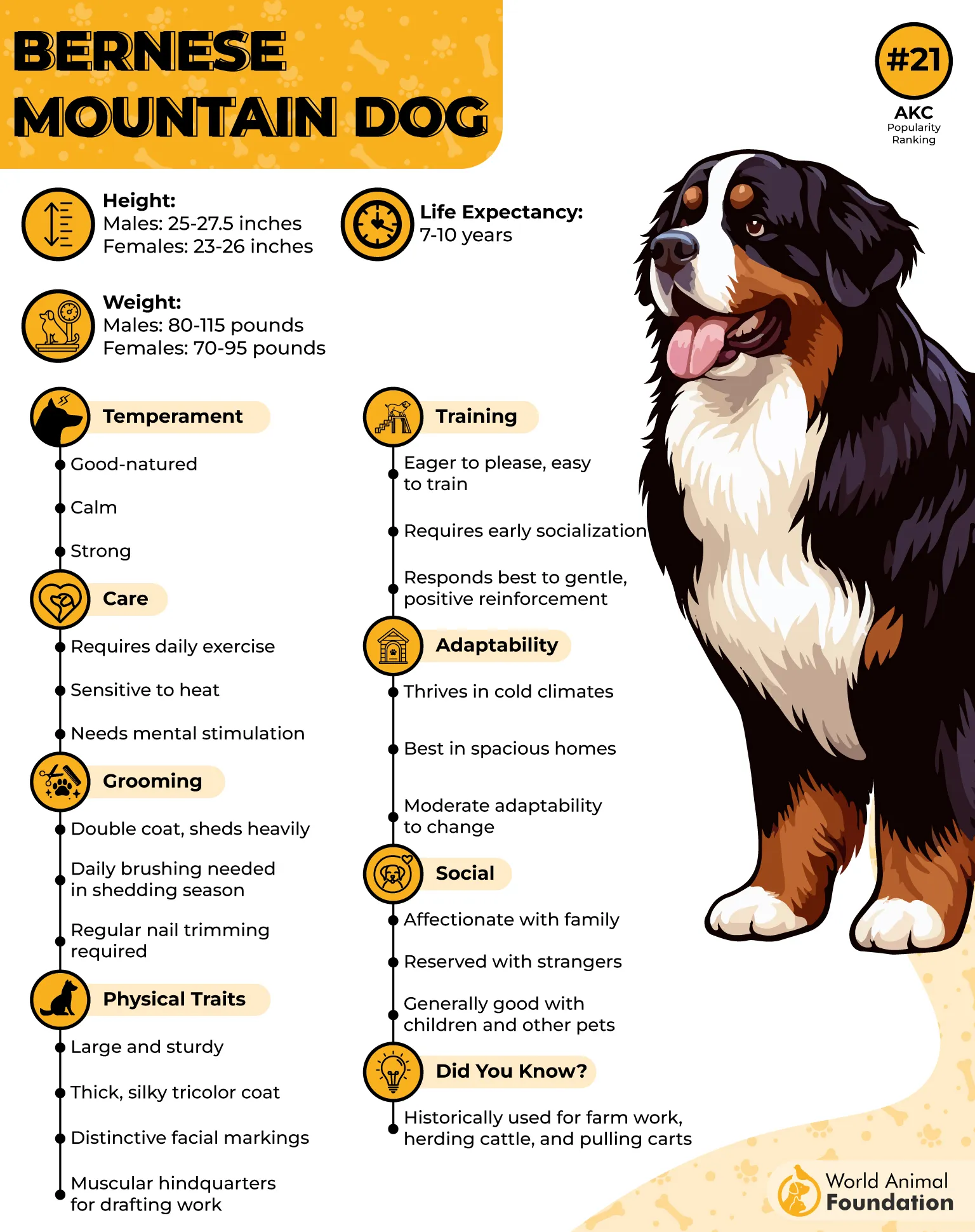
Gentle Nature: Despite their massive size, they’re remarkably affectionate and playful around children.
Late Bloomers: Unlike more fast-developing breeds, Bernese Mountain Dogs take longer to reach mental and physical maturity, which means patience is key during training.
Unique Facts
The name “Berner Sennen” translates to “Bernese Alpine herdsman’s dog,” highlighting their deep history in Swiss pastoral life.
Built for alpine life, they thrive in cold weather and will happily romp in fresh snow for hours.
They need space to move and work. While they can adjust to smaller living spaces, they require plenty of daily exercise and mental stimulation.
7. Akbash
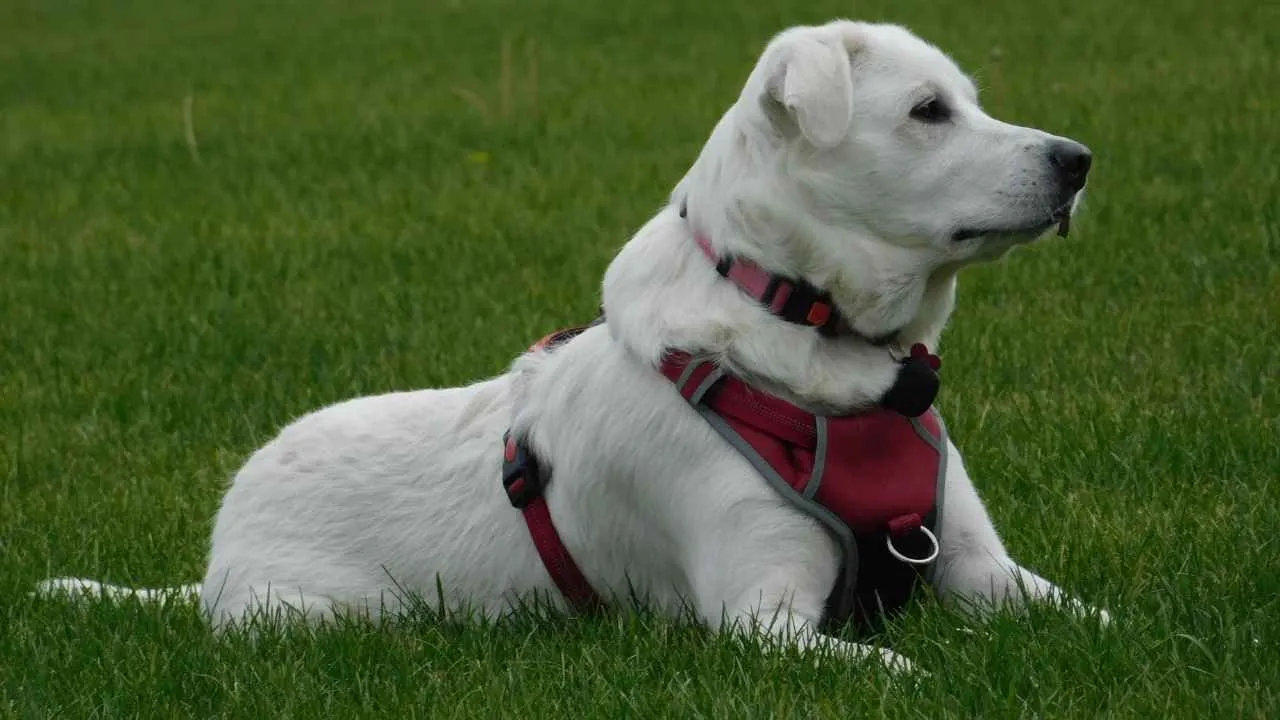
When it comes to standing between a shepherd and a charging bear, the Akbash doesn’t flinch. Originating from Turkey, this fearless livestock guardian dog was bred not only to protect flocks but also to defend human lives.
Armed with a calm demeanor and calculated aggression, the Akbash scans vast open land for signs of danger. If a predator approaches—especially something as bold as a bear—it springs into action, using its size, power, and deep bark to intimidate and confront.
Key Traits
White Coat: Their pale coat isn’t just for looks—it allows them to disappear into a sea of sheep, working silently in the background.
Double Dewclaws: Many Akbash dogs are born with double dewclaws on their hind legs, a common trait among flock guardians for better balance and traction.
Adaptable Size: Despite weighing up to 50 kg, they’re agile enough to chase off a predator and get back to their post without missing a beat.
Unique Facts
Thought to be more than 3,000 years old, the Akbash has guarded Turkish livestock long before written history.
Traditionally, they wore spiked collars to shield their necks in fights against wolves or bears.
Unlike herding dogs, they don’t take commands during work—they act on instinct and training to decide how best to protect their flock.
8. Spanish Mastiff

The Spanish Mastiff is a powerful livestock guardian, originally bred in Spain to protect flocks from wolves and other predators. But their strength and loyalty don’t end there—these dogs have also been known to guard shepherds and their families against potential threats, including bears.
Their calm, steady temperament makes them excellent guardians who stay composed even in high-stress situations.
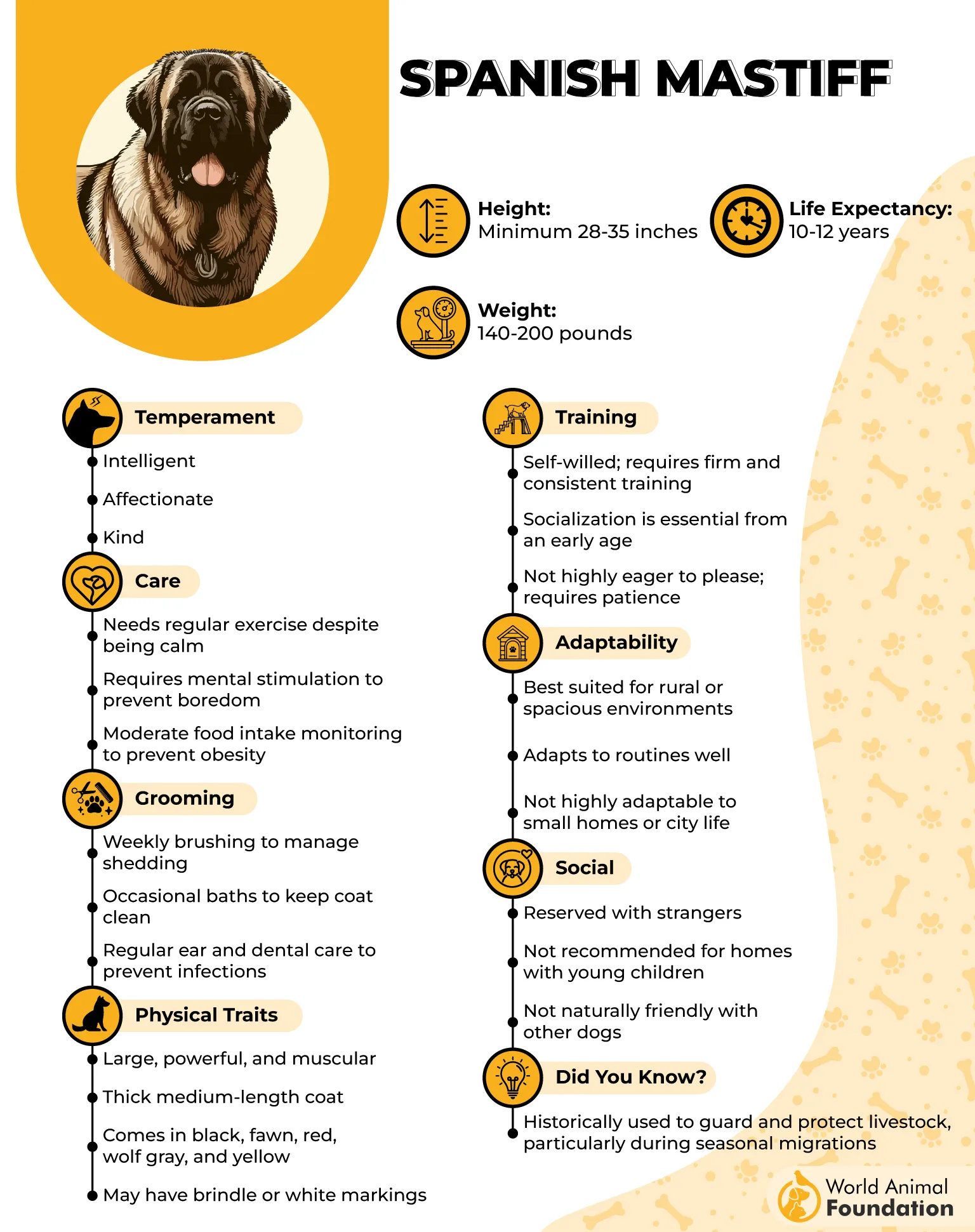
Key Traits
Size and Strength: Spanish Mastiffs are one of the largest dog breeds, with males sometimes reaching up to 260 lbs. Despite their size, they move with a slow, deliberate grace that commands respect.
Distinctive Bark: They have a deep, resonant bark that echoes across open fields, perfect for alerting both shepherds and predators. It’s often enough to ward off danger without a fight.
Historical Role: Used for centuries to guard Merino sheep during their seasonal migrations, Spanish Mastiffs were indispensable to Spanish shepherds traveling long distances across rugged landscapes.
Unique Facts
Their large, droopy ears can trap moisture and dirt, so regular cleaning is needed to prevent infections.
They have a dense coat that sheds significantly, especially during seasonal changes.
Like many giant breeds, they’re prone to bloat and joint issues, and they take several years to reach full maturity.
9. Caucasian Shepherd Dog
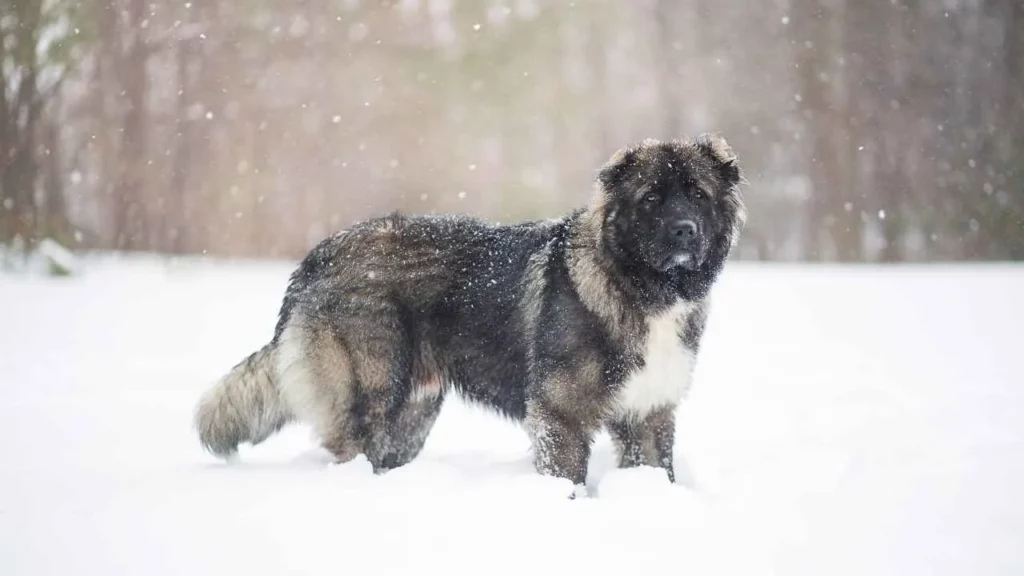
When it comes to dog breeds that protect shepherds from bears, few are as fearsome and dependable as the Caucasian Shepherd Dog.
Bred in the rugged Caucasus Mountains, this ancient guardian was built to face down predators most dogs wouldn’t dare approach, including full-grown bears. They’re not just watchful—they’re relentless defenders. These are effective guardians bred for high-stakes protection.
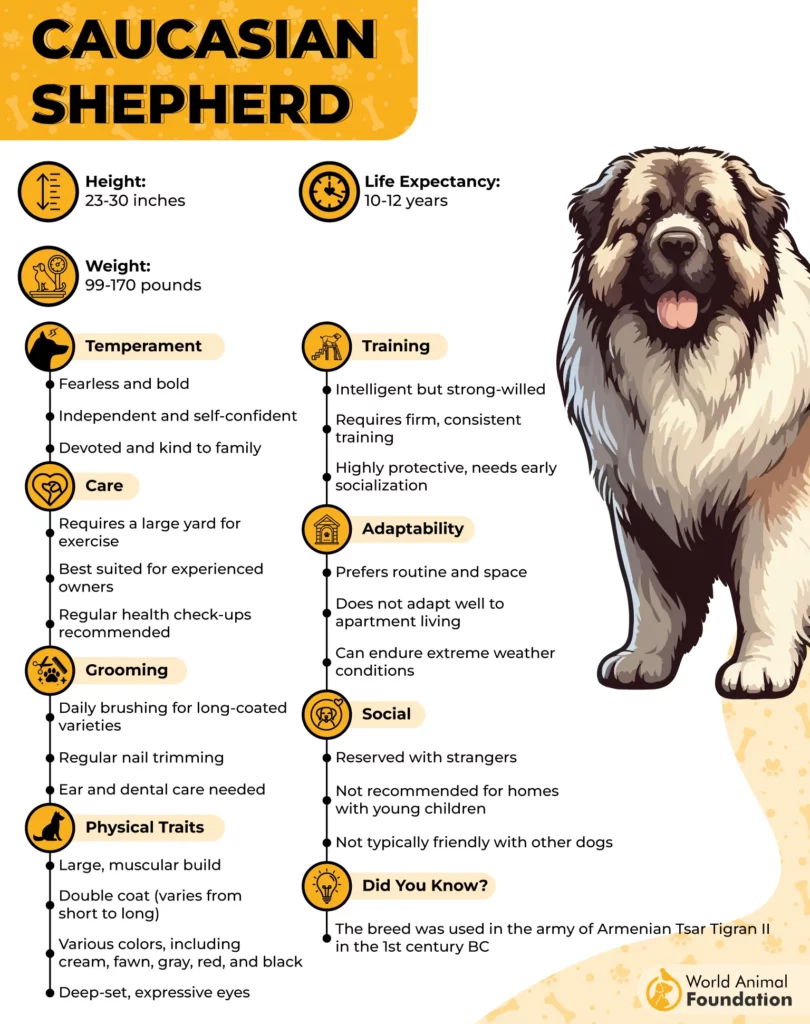
Key Traits
Double Coat: Their thick, weather-resistant double coat keeps them warm in icy climates and sheds seasonally. Regular brushing is essential.
Independent Thinkers: Their guarding instincts come with a headstrong personality. They don’t follow blindly and need firm, experienced guidance.
Unique Facts
One of the most powerful breeds in the world, with a dense, muscular frame and a commanding stance.
They weren’t just livestock protectors—these dogs were trusted to guard prisons and military compounds across Russia and Eastern Europe.
They don’t bark just for fun. When they sound the alarm, it means something’s up.
Conclusion
If you’re a shepherd facing down the real dangers of the wild, choosing the right breed isn’t just preference—it’s survival. When you’re living in the wild or working with livestock in remote terrain, a regular dog just won’t cut it. You need a guardian with the right qualities—courage, strength, loyalty, and a natural instinct to defend. They’re working dogs raised from puppyhood to take on potential threats, including massive predators like bears.
Their intense prey drive isn’t about chasing squirrels—it’s hardwired protection, meant to ward off danger before it ever gets close. And while these dogs are serious protectors, many are also incredibly devoted to their family, forming deep bonds when raised right.


